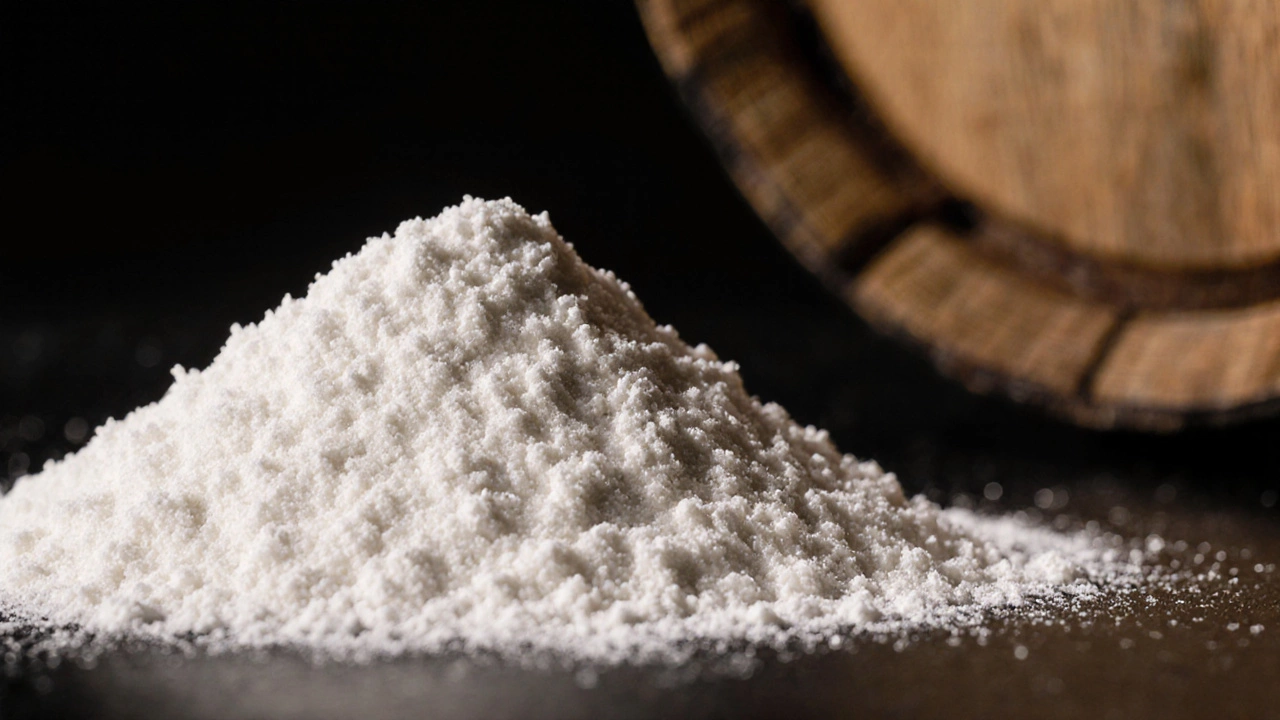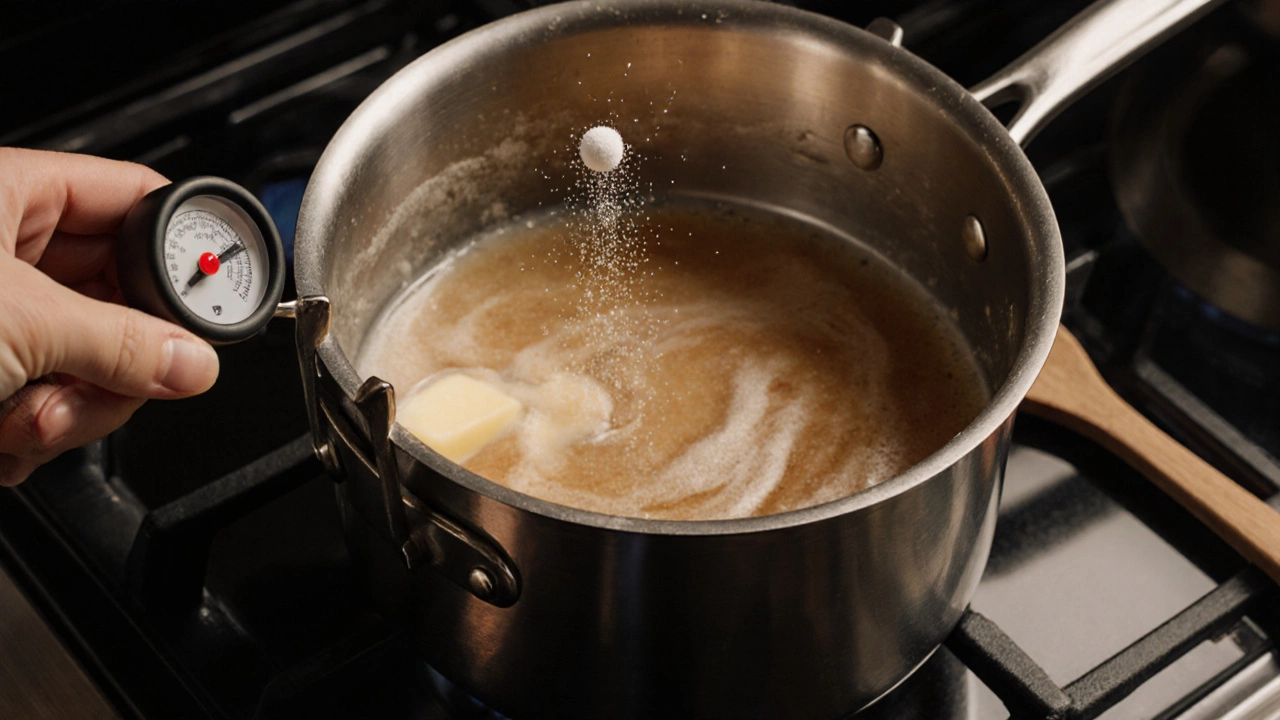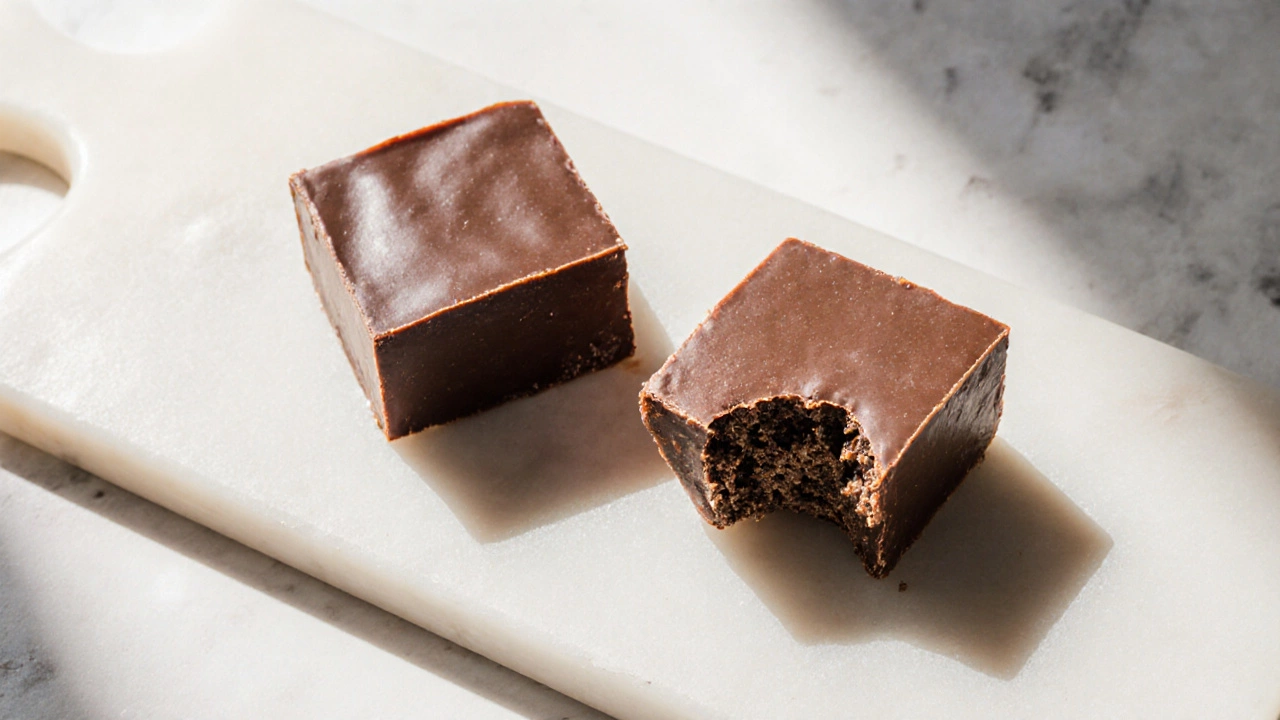
Fudge Cream of Tartar Calculator
Calculate Your Cream of Tartar Needs
Determine the exact amount of cream of tartar needed for perfectly smooth fudge based on your recipe.
Recommended Cream of Tartar
Why this amount?
Adding the right amount of cream of tartar prevents sugar crystallization while maintaining flavor. Use only the calculated amount for best results.
Pro Tip:
Mix cream of tartar with dry ingredients before adding liquids for even distribution. For best results, use a candy thermometer to ensure proper cooking temperature.
Ever wondered why a pinch of Cream of Tartar - the powdered potassium bitartrate left over from winemaking can turn a grainy mess into a silky slab? In this deep dive we’ll unpack the chemistry, show you exactly how to use it, and give you a fool‑proof fudge recipe that showcases the magic of cream of tartar fudge. By the end you’ll know when to add it, how much to add, and how to rescue a batch that’s already gone rogue.
What is Cream of Tartar?
Cream of Tartar is the crystallized form of potassium bitartrate, a natural acid that forms on the inside of wine barrels as grape juice ferments. It’s been a staple in home kitchens for centuries, mainly as a stabiliser for egg whites and as a leavening aid when paired with baking soda. Its acidity (pH ≈ 3.5) is mild but strong enough to interfere with sugar crystal growth - the very process that makes fudge either perfectly smooth or painfully grainy.
How Sugar Crystallization Messes Up Fudge
When you heat Sugar - sucrose, the common sweetener that melts at 160 °C (320 °F) with butter, milk, and chocolate, you create a supersaturated syrup. If the syrup cools too slowly or is agitated at the wrong moment, tiny sugar crystals act as seeds, prompting the whole batch to crystallize into a gritty texture. This is why many home cooks end up with “grainy fudge” despite following a recipe to the letter.
Why Cream of Tartar Stops Unwanted Crystals
The acid in cream of tartar reacts with the basic components in the mixture (mainly the proteins in butter and milk) to form a weak potassium‑acetate complex. This complex coats the sugar molecules, creating a physical barrier that makes it harder for them to line up and form crystals. In addition, the slight increase in acidity lowers the solution’s pH, which slows down the rate at which sucrose molecules join together. The result? A smoother, creamier mouthfeel.
Texture Benefits: From Grainy to Velvety
When you add the right amount - typically 1/8 tsp per cup of sugar - you’ll notice three key texture changes:
- Reduced graininess: The crystals that do form are smaller and more evenly distributed, giving the fudge a melt‑in‑your‑mouth feel.
- Improved chew: The barrier created by the acid keeps the fudge from becoming rock‑hard as it cools, extending the ideal eating window from a few hours to a full day.
- Better shelf‑life: A lower pH also discourages microbial growth, meaning your fudge stays fresh longer when stored in an airtight container.
Flavor and Stability: Does It Taste Different?
Because cream of tartar is used in such tiny quantities, it doesn’t impart a noticeable sour note. Instead, it lets the core flavors - chocolate, butter, and vanilla - shine. It also stabilises the emulsion between the fat from butter and the water from milk, preventing the fudge from separating or developing a grainy “fat bloom” on the surface.

When and How Much to Use
Here’s a quick cheat‑sheet you can keep on your fridge:
- Standard fudge recipe (2 cups sugar) → add 1/4 tsp cream of tartar.
- For extra‑chewy fudge (higher butter ratio) → increase to 1/2 tsp.
- If you’re making a low‑fat version with less butter → keep it at 1/8 tsp to avoid over‑acidifying.
Mix the cream of tartar with the dry ingredients before adding the liquid. This ensures even distribution and prevents clumping.
Common Mistakes and How to Fix Them
Even with the acid help, a few pitfalls can still ruin your batch:
- Over‑heating: Going past the soft‑ball stage (235-240 °F / 112-115 °C) will force sugar crystals to reform, regardless of acid. Use a candy thermometer.
- Stirring too early: Once the mixture hits the soft‑ball stage, let it sit undisturbed for 3-5 minutes before stirring. Premature agitation re‑introduces crystals.
- Too much cream of tartar: Exceeding 1 tsp per cup of sugar can make the fudge slightly tart and affect texture negatively.
If you end up with grainy fudge despite following the steps, return the batch to a low heat, add a splash of heavy cream, and stir vigorously for another minute. The extra moisture often dissolves stubborn crystals.
Step‑by‑Step Fudge Recipe Using Cream of Tartar
Now let’s put theory into practice. This recipe yields about 24 bite‑size squares.
- Combine Sugar, Butter - unsalted butter, 2 sticks (226 g), and 1 cup of evaporated milk in a heavy saucepan.
- Whisk in 1/4 tsp Cream of Tartar and 1 tsp vanilla extract.
- Heat over medium‑high, stirring until the sugar dissolves. Attach a candy thermometer and bring the mixture to 236 °F (soft‑ball stage).
- Remove from heat. Add 2 cups of chopped Chocolate - semi‑sweet chocolate chips and stir until melted and glossy.
- Let the mixture sit untouched for 4 minutes. Then beat briskly with a wooden spoon until it loses its shine and thickens (about 1‑2 minutes).
- Pour into a greased 9‑inch square pan, smooth the top, and let cool to room temperature. Refrigerate for at least 2 hours before cutting.
Thanks to the cream of tartar, the finished squares will have that classic fudgy sheen, a tender chew, and no unpleasant grain.
Comparison: With vs. Without Cream of Tartar
| Attribute | With Cream of Tartar | Without Cream of Tartar |
|---|---|---|
| Graininess | Minimal - smooth texture | High - noticeable sugar crystals |
| Chewiness | Soft‑chewy, retains moisture | Often hard or overly firm |
| Shelf‑life | Up to 7 days airtight | 3-4 days, may develop bloom |
| Flavor Clarity | Chocolate and butter shine | May taste slightly bitter due to over‑crystallization |
Tips for Perfect Fudge Every Time
- Use a reliable candy thermometer. Guesswork is the biggest cause of failure.
- Pre‑measure your cream of tartar. A kitchen scale isn’t necessary, but a set of accurate spoons prevents over‑doing it.
- Keep the mixture covered while it rests. A sudden temperature drop can trigger premature crystallization.
- Experiment with flavors. Add a pinch of sea salt, espresso powder, or orange zest after the chocolate melts for a gourmet twist.

Can I substitute baking soda for cream of tartar?
No. Baking soda is a base and works opposite to the acidic nature of cream of tartar. Using soda alone would raise the pH, encouraging larger sugar crystals and a grainier texture.
Is cream of tartar safe for kids?
Absolutely. The amounts used in cooking are microscopic-far below any safety threshold. It’s the same ingredient found in many store‑bought candies.
What if I forget to add cream of tartar?
You can still rescue the batch. Return the fudge to low heat, stir in a teaspoon of corn‑starch slurry (corn‑starch mixed with water), and keep stirring until smooth. The starch helps suspend sugar crystals.
Does the brand of cream of tartar matter?
Not really. Pure, food‑grade cream of tartar works the same regardless of brand. Just avoid mixes that contain fillers or anti‑caking agents.
Can I use cream of tartar in vegan fudge?
Yes. Since it’s plant‑derived, it fits vegan guidelines. Just replace dairy butter and milk with coconut oil and plant‑based milk, then follow the same acid‑addition steps.